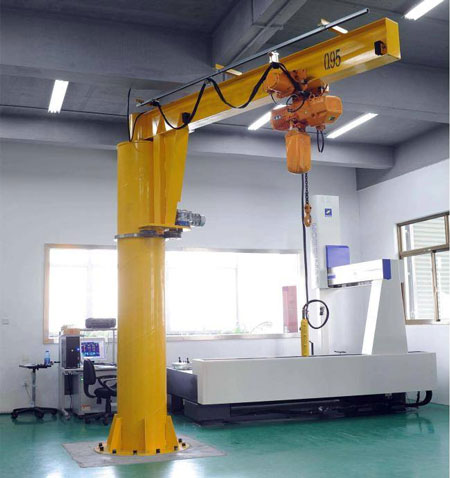As one of China’s top 3 crane manufacturers, the cantilever crane is one of our main products. To protect the cantilever jib crane better when working, generally, we will equip the safety device on the jib crane, like an overload limiter, height lifting switch, travel limit switch, etc. The overload limiter can help clients monitor the real-time lifting weight, and when the lifting weight is over the capacity, it will sound an alarm to remind clients. However, most clients don’t know the cantilever cranes well, so they may not pay attention to the overload protection device. Now, I will introduce how to check whether the overload protection device of the cantilever crane meets the requirements.
Check the safety protection device of the cantilever crane to see whether the overload protection device is sensitive, reliable, and meets the design requirements. Also, check the opening pressure of the hydraulic overload protection device, and whether the comprehensive error of the alarm and power source cut-off setting points of the mechanical, electronic, and comprehensive overload protectors meet the requirements. Finally, check the torque limiter. The torque limiter is a safety device for the boom-type crane to prevent overload and tipping.
Check the sensitivity and reliability of the torque limiter by the amplification method or the weight increase method, and check whether the comprehensive error of the torque limiter alarm and power source cut-off setting points is within the specified range. The extreme position limiter checks whether the variable mechanism, lifting mechanism, and running mechanism of the cantilever jib crane hoisting equipment can generate an alarm signal when reaching the set position distance. It automatically cuts off the power source running in a dangerous direction.

Windproof device. For cantilever cranes with a height of more than 50 meters at the hinge point of the boom root, the anemometer should be checked to see whether it can accurately alarm when the wind speed setting point or the working limit wind speed is reached. For cantilever jib cranes operating on rails in the open air, the rail clamps, iron shoes, and anchoring devices should be checked for deformation, defects, and reliability of their independent operation. For automatic rail clamps, the transmission shaft should be checked for sudden gusts of wind, and the wind protection device should be checked for the reliability of the wind protection function and electrical interlock switch function in the non-anchored state in coordination with the trolley running brake.
Protective devices. Check whether all kinds of protective covers, guardrails, guard plates, ladders, etc. on the cantilever jib crane are complete and reliable; whether the exposed open transmission on the cantilever crane may cause winding and injury; whether the rotating parts such as couplings, sprockets, chains, and transmission belts have protective covers; whether the pedestrian walkways, ladders, and parts that may cause personnel exposure on the crane have guardrails, and whether the treatment methods for removing flat warts meet the requirements. Electrical equipment of cantilever cranes operating in the open air should be equipped with rain covers. The control device should check whether the electrical accessories are complete and intact, whether the mechanical fixation is firm, not loose, and not stuck; whether the power supply cable is aging or exposed; the insulation material should be in good condition, without damage or deterioration; the connection parts such as bolt contacts and brushes should be reliable; the electrical equipment and electrical components selected on the crane should be compatible with the power supply, working environment and working conditions.
Except the cantilever crane overload limiter, if you have any other questions, just feel free to contact with us, we have professional technical team, they can design the most suitable solution for you accordingly!